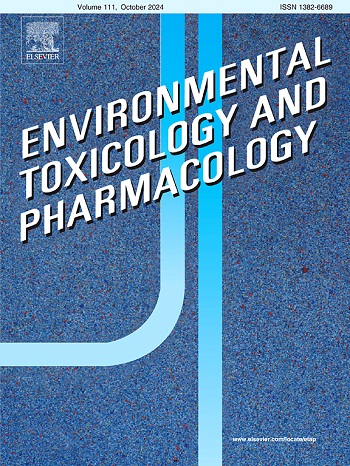氟吡喃醌对新热带群居蜜蜂中肠和大脑的影响及其行为效应
IF 4.2
3区 环境科学与生态学
Q2 ENVIRONMENTAL SCIENCES
引用次数: 0
摘要
为了减少农药对非目标生物的危害,人们开发了新的活性成分。例如,氟吡地酮是根据对环境和非目标生物更安全的替代品的建议创建的。然而,这种杀虫剂对新热带国家本地蜜蜂的影响仍然知之甚少,因为大多数研究都是在蜜蜂模型蜂上进行的。研究人员发现,在与环境相关的浓度(4 mg/kg)下,慢性口服暴露于氟吡地黄酮并不会干扰蜜蜂的生存。此外,杀虫剂不能改变个体中肠的形态,至少在7天的生物测定中,但它确实改变了暴露的蜜蜂大脑中凯尼恩细胞的排列。然而,尽管没有影响组织水平的生物标志物和存活,杀虫剂暴露降低了蜜蜂的运动参数,这可能会影响暴露蜜蜂的表现。本文章由计算机程序翻译,如有差异,请以英文原文为准。
Impacts of flupyradifurone on the midgut and brain of the neotropical social bee Scaptotrigona postica and its behavioral effects
To reduce the damage caused by pesticides to non-target organisms, new active ingredients have been developed. Flupyradifurone, for example, was created with the proposal of being a safer alternative for the environment and non-target organisms. However, the effects of this insecticide on native bees in neotropical countries remain poorly understood, as most studies have been conducted on the Apis mellifera model bee. Using the species Scaptotrigona postica, in chronic oral exposure at an environmentally relevant concentration (4 mg/kg), we found that exposure to flupyradifurone did not interfere with bee survival. In addition, the insecticide was not able to alter the morphology of the midgut of the individuals, at least along 7 days of bioassay, but it did alter the arrangement of the Kenyon cells in the brains of the exposed bees. However, despite not having affected biomarkers at the tissue level and survival, the insecticide exposure reduced the bees' locomotion parameters, which may affect the performance of the exposed bees.
求助全文
通过发布文献求助,成功后即可免费获取论文全文。
去求助
来源期刊
CiteScore
7.00
自引率
4.70%
发文量
185
审稿时长
34 days
期刊介绍:
Environmental Toxicology and Pharmacology publishes the results of studies concerning toxic and pharmacological effects of (human and veterinary) drugs and of environmental contaminants in animals and man.
Areas of special interest are: molecular mechanisms of toxicity, biotransformation and toxicokinetics (including toxicokinetic modelling), molecular, biochemical and physiological mechanisms explaining differences in sensitivity between species and individuals, the characterisation of pathophysiological models and mechanisms involved in the development of effects and the identification of biological markers that can be used to study exposure and effects in man and animals.
In addition to full length papers, short communications, full-length reviews and mini-reviews, Environmental Toxicology and Pharmacology will publish in depth assessments of special problem areas. The latter publications may exceed the length of a full length paper three to fourfold. A basic requirement is that the assessments are made under the auspices of international groups of leading experts in the fields concerned. The information examined may either consist of data that were already published, or of new data that were obtained within the framework of collaborative research programmes. Provision is also made for the acceptance of minireviews on (classes of) compounds, toxicities or mechanisms, debating recent advances in rapidly developing fields that fall within the scope of the journal.

 求助内容:
求助内容: 应助结果提醒方式:
应助结果提醒方式:


